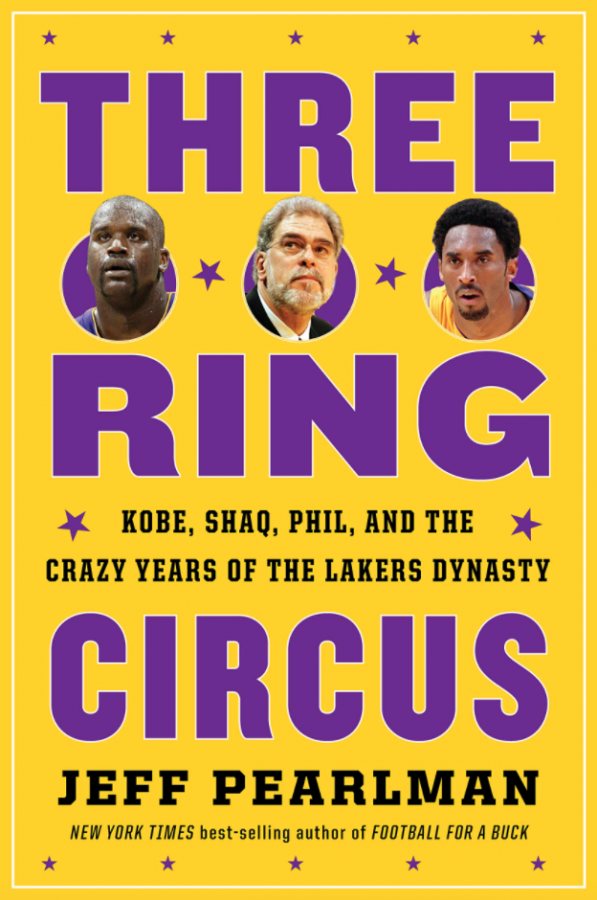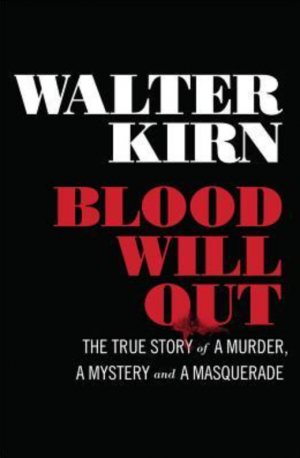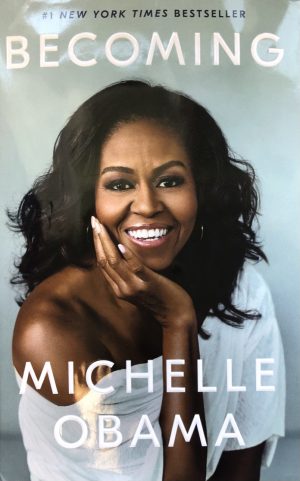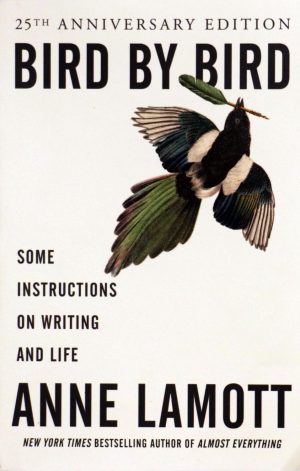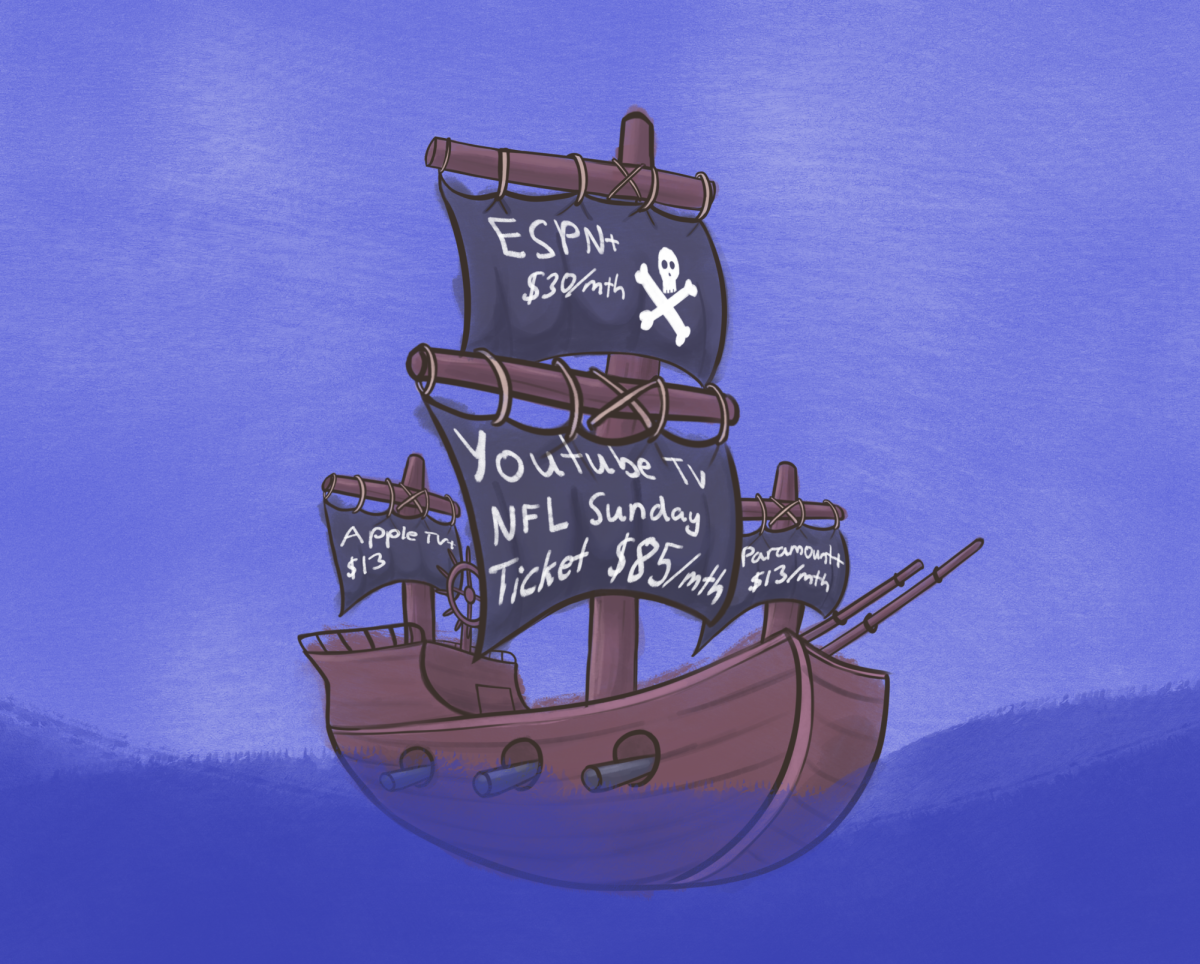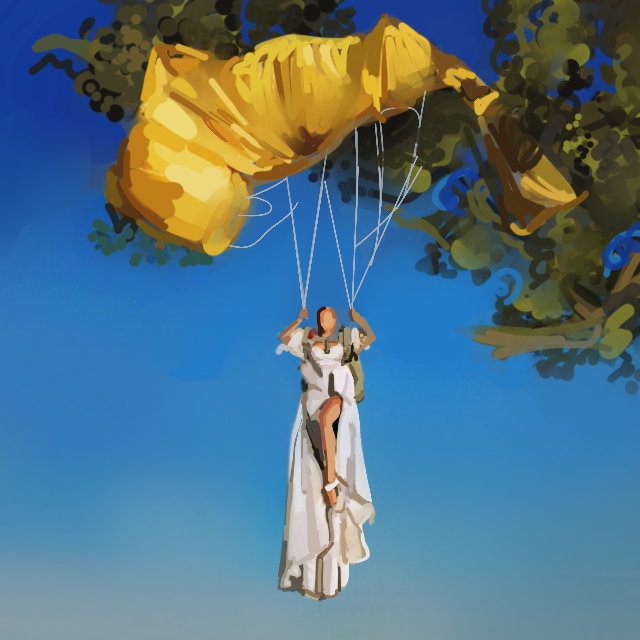Three-peat
How did the turbulent trio of Kobe, Shaq and Phil manage to win three NBA titles?
Provided by Goodreads
“Three Ring Circus: Kobe, Shaq, Phil, and the Crazy Years of the Lakers Dynasty” is a 390 page nonfiction written by Jeff Pearlman that was first published Sep. 22, 2020. Pearlman is also the author of “Football for a Buck: The Crazy Rise and Crazier Demise of the USFL” and “Showtime: Magic, Kareem, Riley, and the Los Angeles Lakers Dynasty of the 1980s.”
May 21, 2021
Aditya’s ranking: ★★★★☆
What do you get when you combine a “Santa-like,” seven-foot-one hulk who can’t hit a free throw for his life; a legendary coach coming off a legendary three-peat; and a supremely gifted, supremely stubborn 21-year-old guard who refuses to pass the ball?
Drama, yes. Offseason fistfights? Sure. Passive-aggressive quotes that force reporters to choose sides between teammates? Naturally. But, more than anything, you get three straight championships and one of the greatest basketball dynasties of all time.
Three-Ring Circus, by sports journalist Jeff Pearlman, delves into the Los Angeles Lakers dominant back-to-back-to-back NBA titles in 2000, 2001, and 2002. Subtitled “Kobe, Shaq, Phil, and the Crazy Years of the Lakers Dynasty,” it certainly lives up to the name, telling the story of the team through inside looks at the personalities who made the team the drama-filled force that it was.
It begins by describing the end of the Magic Johnson era and the 1996 offseason, when the Lakers signed star center Shaquille O’Neal and made a draft-day trade to acquire Kobe Bryant, a flashy 19-year old out of Lower Merion High School in Philadelphia, PA. With Pearlman’s incredibly well-reported, fascinating account, I discovered an insight into the drama-filled world of professional basketball through the lens of a defining era in the history of my favorite basketball franchise.
As a Laker fan who began following the NBA in 2017 with the draft of Lonzo Ball (he got traded, but I stuck with my team), the glory days of the Lakers with co-stars Kobe Bryant and Shaquille O’Neal in the early 2000s — in Shaq’s own words, “the most enigmatic, controversial, dominant one-two punch ever created” — were the stuff of legend. Pearlman does an incredible job of painting a vivid, largely unbiased picture of these dynastic years of the Lakers. From Shaq’s laziness to young Kobe’s arrogance to head coach Phil Jackson’s failures to reconcile the big personalities in his locker room, he leaves no stone unturned in his account of the team during those years, delving deep into the factors that motivated each of the three men through extensive interviews with everyone that surrounded them at the time.
It is also fascinating to hear about the often-ignored role players that complemented the team’s dynamic duo, from short-lived experiments with older, washed stars like Dennis Rodman and Karl Malone, to key veterans like Robert “Big Shot Bob” Horry and Derek Fisher. Pearlman often devotes entire chapters to each key roster piece — for instance, ”Nick the Quick,” “Fox Catcher,” and “Someone Shoot J.R.,” for Nick Van Exel, Rick Fox and J.R. Rider respectively — weaving each unique character in with the narrative of the Lakers seasons.
Beyond all the off-court drama, the highlight of the book comes in the vivid description of the basketball itself — the key moments and games that defined each championship run. As an avid fan and sports journalist that has both watched and covered plenty of basketball, I find Pearlman’s writing exquisite, enabling readers to imagine each game, from the plays to the intangible momentum shifts. My favorite accompaniment to the novel was queuing up the old game tapes on YouTube. Watching the Lakers pull off a sixteen-point fourth-quarter comeback in Game Seven of the 2000 Western Conference Finals while reading about it in painstaking detail was genuinely exhilarating — by far the best experience I’ve had watching a non-live game.
Pearlman doesn’t shy away from controversy either — he devotes over two chapters to the sexual assault allegations that surrounded Kobe throughout the 2004 season, complete with excerpts of the police interviews and interviews with the detectives that investigated the case. He makes no attempt to present Kobe’s character through the rose-colored glasses that the NBA media often adopts when addressing the charges, instead plainly displaying the evidence that rather clearly points to his guilt.
Finally, having published “Three Ring Circus” mere months after the deaths of Kobe, his daughter Gianna, and seven others in a tragic helicopter crash, he addresses Kobe’s broader legacy in the author’s note that prefaces the book. He writes that “the Kobe Bryant of 1996 to 2004 is not the Kobe Bryant of 2005 to January 26, 2020…When a legend dies, we feel lost. Sometimes, I hope, it eases that grief to know how he began.”
This book is a fascinating account of two of the flashiest, most exciting stars of modern basketball and the locker room drama that surrounded them. With their frequent fights, it’s hard to conceive that the team managed to three-peat — and yet they did. Even if you aren’t familiar with the Lakers or NBA history, a casual knowledge of the rules of the game should be sufficient to carry you through this 390-page read.
And, of course, it provides a great preview of the imminent Lakers three-peat.
For those who enjoyed “Three Ring Circus,” Aditya also recommends “Betaball: How Silicon Valley and Science Built One of the Greatest Basketball Teams in History” by Erik Malinowski, “Friday Night Lights” by Buzz Bissinger, “The Mamba Mentality: How I Play by Kobe Bryant” and “The Sixth Man: A Memoir” by Andre Iguodala.


















![“[Building nerf blasters] became this outlet of creativity for me that hasn't been matched by anything else. The process [of] making a build complete to your desire is such a painstakingly difficult process, but I've had to learn from [the skills needed from] soldering to proper painting. There's so many different options for everything, if you think about it, it exists. The best part is [that] if it doesn't exist, you can build it yourself," Ishaan Parate said.](https://harkeraquila.com/wp-content/uploads/2022/08/DSC_8149-900x604.jpg)




![“When I came into high school, I was ready to be a follower. But DECA was a game changer for me. It helped me overcome my fear of public speaking, and it's played such a major role in who I've become today. To be able to successfully lead a chapter of 150 students, an officer team and be one of the upperclassmen I once really admired is something I'm [really] proud of,” Anvitha Tummala ('21) said.](https://harkeraquila.com/wp-content/uploads/2021/07/Screen-Shot-2021-07-25-at-9.50.05-AM-900x594.png)







![“I think getting up in the morning and having a sense of purpose [is exciting]. I think without a certain amount of drive, life is kind of obsolete and mundane, and I think having that every single day is what makes each day unique and kind of makes life exciting,” Neymika Jain (12) said.](https://harkeraquila.com/wp-content/uploads/2017/06/Screen-Shot-2017-06-03-at-4.54.16-PM.png)








![“My slogan is ‘slow feet, don’t eat, and I’m hungry.’ You need to run fast to get where you are–you aren't going to get those championships if you aren't fast,” Angel Cervantes (12) said. “I want to do well in school on my tests and in track and win championships for my team. I live by that, [and] I can do that anywhere: in the classroom or on the field.”](https://harkeraquila.com/wp-content/uploads/2018/06/DSC5146-900x601.jpg)
![“[Volleyball has] taught me how to fall correctly, and another thing it taught is that you don’t have to be the best at something to be good at it. If you just hit the ball in a smart way, then it still scores points and you’re good at it. You could be a background player and still make a much bigger impact on the team than you would think,” Anya Gert (’20) said.](https://harkeraquila.com/wp-content/uploads/2020/06/AnnaGert_JinTuan_HoHPhotoEdited-600x900.jpeg)

![“I'm not nearly there yet, but [my confidence has] definitely been getting better since I was pretty shy and timid coming into Harker my freshman year. I know that there's a lot of people that are really confident in what they do, and I really admire them. Everyone's so driven and that has really pushed me to kind of try to find my own place in high school and be more confident,” Alyssa Huang (’20) said.](https://harkeraquila.com/wp-content/uploads/2020/06/AlyssaHuang_EmilyChen_HoHPhoto-900x749.jpeg)



